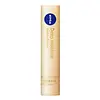What's inside
What's inside
 Key Ingredients
Key Ingredients

 Benefits
Benefits

 Concerns
Concerns

 Ingredients Side-by-side
Ingredients Side-by-side

Petrolatum
EmollientPolyglyceryl-2 Triisostearate
EmulsifyingDiisostearyl Malate
EmollientParaffinum Liquidum
EmollientJojoba Esters
EmollientHydrogenated Polyisobutene
EmollientPolyethylene
AbrasiveMeadowfoam Delta-Lactone
Skin ConditioningCholesteryl Hydroxystearate
EmollientHydrogenated Coco-Glycerides
EmollientEuphorbia Cerifera Wax
Microcrystalline Wax
Emulsion StabilisingMangifera Indica Seed Butter
Skin ConditioningCeresin
Emulsion StabilisingPrunus Amygdalus Dulcis Oil
Skin ConditioningTrihydroxystearin
Skin ConditioningPhenoxyethanol
PreservativeCaprylyl Glycol
EmollientTocopheryl Acetate
AntioxidantGlyceryl Caprylate
EmollientSimmondsia Chinensis Seed Oil
EmollientCamellia Japonica Seed Oil
EmollientParfum
MaskingTocopherol
AntioxidantTbhq
AntioxidantCymbopogon Schoenanthus Oil
MaskingWater
Skin ConditioningButylene Glycol
HumectantHoney Extract
HumectantEthylhexylglycerin
Skin ConditioningPetrolatum, Polyglyceryl-2 Triisostearate, Diisostearyl Malate, Paraffinum Liquidum, Jojoba Esters, Hydrogenated Polyisobutene, Polyethylene, Meadowfoam Delta-Lactone, Cholesteryl Hydroxystearate, Hydrogenated Coco-Glycerides, Euphorbia Cerifera Wax, Microcrystalline Wax, Mangifera Indica Seed Butter, Ceresin, Prunus Amygdalus Dulcis Oil, Trihydroxystearin, Phenoxyethanol, Caprylyl Glycol, Tocopheryl Acetate, Glyceryl Caprylate, Simmondsia Chinensis Seed Oil, Camellia Japonica Seed Oil, Parfum, Tocopherol, Tbhq, Cymbopogon Schoenanthus Oil, Water, Butylene Glycol, Honey Extract, Ethylhexylglycerin
Tocopheryl Acetate
AntioxidantStearyl Glycyrrhetinate
Skin ConditioningOlea Europaea Fruit Oil
MaskingPetrolatum
EmollientDiisostearyl Malate
EmollientHydrogenated Polybutene
Dipentaerythrityl Hexahydroxystearate
EmulsifyingCeresin
Emulsion StabilisingPhytosteryl/Octyldodecyl Lauroyl Glutamate
Skin ConditioningPhytosteryl/Isostearyl/Cetyl/Stearyl/Behenyl Dimer Dilinoleate
Skin ConditioningEthylhexyl Methoxycinnamate
UV AbsorberPolyglyceryl-6 Diisostearate
EmulsifyingPolyethylene
AbrasivePhytosteryl/Behenyl/Octyldodecyl Lauroyl Glutamate
Skin ConditioningMicrocrystalline Wax
Emulsion StabilisingParaffinum Liquidum
EmollientGlycerin
HumectantEuphorbia Cerifera Cera
AstringentTrehalose
HumectantHoney
HumectantRoyal Jelly Extract
Skin ConditioningDimethicone
EmollientButyl Methoxydibenzoylmethane
UV AbsorberBHT
AntioxidantWater
Skin ConditioningTocopherol
AntioxidantAlcohol Denat.
AntimicrobialCI 15985
Cosmetic ColorantCI 19140
Cosmetic ColorantTocopheryl Acetate, Stearyl Glycyrrhetinate, Olea Europaea Fruit Oil, Petrolatum, Diisostearyl Malate, Hydrogenated Polybutene, Dipentaerythrityl Hexahydroxystearate, Ceresin, Phytosteryl/Octyldodecyl Lauroyl Glutamate, Phytosteryl/Isostearyl/Cetyl/Stearyl/Behenyl Dimer Dilinoleate, Ethylhexyl Methoxycinnamate, Polyglyceryl-6 Diisostearate, Polyethylene, Phytosteryl/Behenyl/Octyldodecyl Lauroyl Glutamate, Microcrystalline Wax, Paraffinum Liquidum, Glycerin, Euphorbia Cerifera Cera, Trehalose, Honey, Royal Jelly Extract, Dimethicone, Butyl Methoxydibenzoylmethane, BHT, Water, Tocopherol, Alcohol Denat., CI 15985, CI 19140
 Reviews
Reviews

Ingredients Explained
These ingredients are found in both products.
Ingredients higher up in an ingredient list are typically present in a larger amount.
Ceresin is a wax derived from ozokerite. It is an alternative to beeswax.
The most common process of creating ceresin is by using heat and sulfuric acid.
Diisostearyl Malate is an emollient and most often used in lip products. It comes from isostearyl alcohol, a fatty acid, and malic acid, an AHA.
As an emollient, Diisostearyl Malate helps create a thin film on your skin to trap moisture in. This helps keep your skin soft and smooth.
Microcrystalline Wax is created by de-oiling petroleum. It is highly refined and purified before being added to cosmetics.
Microcrystalline Wax is used to enhance the texture and create even consistency. It helps stabilize a product by preventing ingredients from separating.
Paraffinum Liquidum is also known as liquid paraffin. It is a type of highly refined mineral oil.
Like other oils, Paraffinum Liquidum has emollient properties. Emollients help soothe and soften the skin. By creating a barrier to trap moisture within, emollients help keep your skin hydrated.
Paraffinum Liquidum does not irritate the skin and is non-comedogenic.
Learn more about Paraffinum LiquidumPetrolatum is more commonly known as petroleum jelly. It is created by mixing waxes and mineral oils.
This ingredient is effective at reducing water loss by 99%. This is because it is an occlusive. Occlusives create a hydrophobic barrier on the skin to prevent evaporation. This property makes it great for hydrating dry skin.
Pro tip: Use occlusives, such as this ingredient, on damp skin for the best results.
The quality or origin of petrolatum is only known when disclosed by the brand. Most cosmetic petrolatum has gone through several purification stages.
Another benefit of occlusives is it protects your skin against infection or allergies.
Petrolatum may not be safe for fungal-acne. Studies show mineral oil / petroleum leads to the growth of M. Furfur, a type of yeast.
Learn more about PetrolatumPolyethylene is a synthetic ingredient that helps the skin retain moisture. It is a polymer.
It is also typically used within product formulations to help bind solid ingredients together and thicken oil-based ingredients. When added to balms and emulsions, it helps increase the melting point temperature.
Tocopherol (also known as Vitamin E) is a common antioxidant used to help protect the skin from free-radicals and strengthen the skin barrier. It's also fat soluble - this means our skin is great at absorbing it.
Vitamin E also helps keep your natural skin lipids healthy. Your lipid skin barrier naturally consists of lipids, ceramides, and fatty acids. Vitamin E offers extra protection for your skin’s lipid barrier, keeping your skin healthy and nourished.
Another benefit is a bit of UV protection. Vitamin E helps reduce the damage caused by UVB rays. (It should not replace your sunscreen). Combining it with Vitamin C can decrease sunburned cells and hyperpigmentation after UV exposure.
You might have noticed Vitamin E + C often paired together. This is because it is great at stabilizing Vitamin C. Using the two together helps increase the effectiveness of both ingredients.
There are often claims that Vitamin E can reduce/prevent scarring, but these claims haven't been confirmed by scientific research.
Learn more about TocopherolTocopheryl Acetate is AKA Vitamin E. It is an antioxidant and protects your skin from free radicals. Free radicals damage the skin by breaking down collagen.
One study found using Tocopheryl Acetate with Vitamin C decreased the number of sunburned cells.
Tocopheryl Acetate is commonly found in both skincare and dietary supplements.
Learn more about Tocopheryl AcetateWater. It's the most common cosmetic ingredient of all. You'll usually see it at the top of ingredient lists, meaning that it makes up the largest part of the product.
So why is it so popular? Water most often acts as a solvent - this means that it helps dissolve other ingredients into the formulation.
You'll also recognize water as that liquid we all need to stay alive. If you see this, drink a glass of water. Stay hydrated!
Learn more about Water